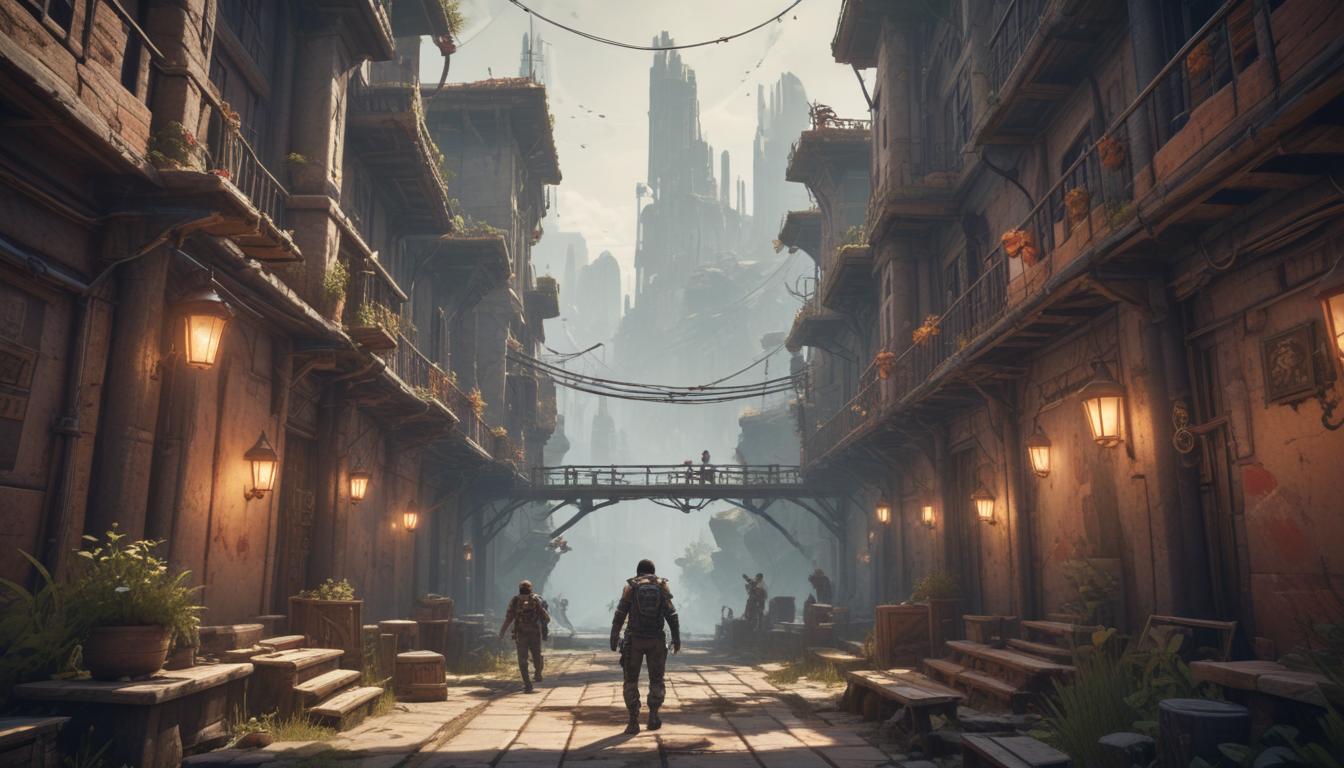Now Reading: Master Multiplayer Game Networking
- 01
Master Multiplayer Game Networking
Master Multiplayer Game Networking

Mastering Multiplayer Game Development Your First Steps in Network Programming
You have an incredible game idea. The mechanics are polished, the art is coming along, and the core gameplay loop is fun. But you want more. You envision players from around the world connecting, competing, and collaborating within the world you’ve built. The moment you type “how to make a multiplayer game” into a search bar, you’re hit with a tidal wave of acronyms and complex concepts like sockets, serialization, UDP, TCP, and client-side prediction. It can feel like an insurmountable wall, turning your dream into a source of frustration.
This is a common pain point for developers moving from single-player to multiplayer creation. The good news is that it’s not magic; it’s a series of logical problems with established solutions. This guide is your first step to demystifying the world of network programming. We will break down the foundational concepts you absolutely must understand, helping you make the right architectural decisions from the very beginning. Forget the confusion. Let’s build a solid foundation for your multiplayer masterpiece.
The Fundamental Choice Client-Server vs P2P
Before you write a single line of netcode, you must make a critical architectural decision that will impact your entire project. How will your players connect to one another? The two dominant models are Client-Server and Peer-to-Peer (P2P). Choosing the wrong one for your game type can lead to significant problems with cheating, cost, and player experience down the line. This is the single most important choice you will make at the outset.
Think of this as choosing the foundation for your house. Both options can support a structure, but they are built for very different circumstances. A game with a persistent world and a high player count like an MMO has vastly different needs from a two-player fighting game. Understanding the strengths and weaknesses of each model is essential for building a stable and successful multiplayer experience.
The Client-Server Model
In the Client-Server model, one computer acts as the ultimate source of truth the server. All players, or clients, connect directly to this central server. When you move your character, you aren’t telling other players where you are moving. Instead, you send your input (e.g., “W key pressed”) to the server. The server processes this input, updates the game state, and then tells all the connected clients, including you, what the new state of the world is. The server is the referee, the game board, and the rule keeper all in one.
This model’s greatest strength is authority. Because the server is the single source of truth, it’s much harder for players to cheat by manipulating their game client. This is crucial for competitive games like Valorant or MMOs like World of Warcraft. The server can validate every action, ensuring no one can teleport across the map or give themselves infinite health. The primary downsides are cost and maintenance. You need to run, secure, and pay for these servers, which can be a significant operational expense. If the server goes down, no one can play.
The Peer-to-Peer P2P Model
The Peer-to-Peer (P2P) model does away with the central server. Instead, players connect directly to each other. In a pure P2P setup, every player communicates their actions to every other player. In a more common variation, one of the players is designated as the “host,” acting as a temporary, player-run server for that specific game session. If the host leaves, the game might try to migrate the host role to another player, which can be a tricky process.
The main advantage of P2P is cost, since there are no dedicated servers to maintain. It can also, in theory, offer lower latency between players who are geographically close because their data doesn’t need to make a round trip to a distant server. This model is often used for co-op games or fighting games where a small number of players interact directly. However, P2P is highly susceptible to cheating, as each client has more authority. It also suffers from the “host advantage,” where the host player has a slight latency edge, and synchronization can become a nightmare as the player count increases.
The Language of the Network TCP vs UDP
Once you’ve chosen your architecture, you need to decide how your game will actually send information across the internet. This is done using transport protocols, and the two you will hear about constantly are TCP (Transmission Control Protocol) and UDP (User Datagram Protocol). Thinking one is simply “better” than the other is a mistake; they are different tools for different jobs. For game development, this choice has a massive impact on how responsive and fluid your game feels.
Imagine you are sending a letter. TCP is like sending a package with registered mail that requires a signature. You get a confirmation that it arrived, and if any part of it is lost, it gets resent. It’s reliable and ordered, but that back-and-forth communication takes time. UDP, on the other hand, is like sending a postcard. You just drop it in the mail and hope for the best. It’s incredibly fast, but there’s no guarantee it will arrive, or that it will arrive in the right order. For fast-paced games, speed is almost always more important than guaranteed delivery for most data.
This is why the vast majority of real-time multiplayer games are built on UDP. When sending player positions, you don’t care if a packet from 100 milliseconds ago was lost, because you are about to send a brand new packet with the most current position. Receiving an old position update would be worse than receiving nothing at all. UDP allows you to fire off these updates rapidly without waiting for confirmation, which is essential for a smooth experience. TCP is still used in gaming, but for things where reliability is more important than speed, such as handling a player’s login, a purchase in a game store, or a chat message.

Tackling the Real Dragons Latency and Synchronization
Welcome to the true challenge of network programming. Latency, often called “lag,” is the time it takes for data to travel from your computer to the server and back. Synchronization is the immense challenge of ensuring that all players see a reasonably similar and fair version of the game world, despite this latency. If you press the shoot button, but the player you are aiming at has already moved on their screen, who is right? Solving this problem is the art of creating good “netcode.”
You cannot eliminate latency; it is a physical limitation of the speed of light and network infrastructure. A good developer’s job is not to eliminate it, but to hide it from the player as much as possible. This is done through a combination of clever techniques. The most important of these are client-side prediction and interpolation. These are the secret ingredients that make modern multiplayer games feel responsive and smooth, even with imperfect internet connections.
Client-side prediction means that when you press a key to move forward, your game client doesn’t wait for the server’s permission. It immediately predicts the result and starts moving your character on your screen. This makes your own actions feel instantaneous. Meanwhile, it sends your input to the server, which will eventually send back the “true” location. If the prediction was slightly off, your client will make a tiny, often unnoticeable correction. For other players, their movement can look jerky as you receive position updates every few milliseconds. To fix this, your client uses interpolation, smoothly animating their character between the last known position and the new one, creating the illusion of fluid movement instead of teleporting them from point to point. Mastering these concepts is what separates a frustrating experience from a fluid one.


































